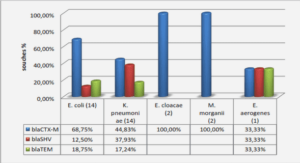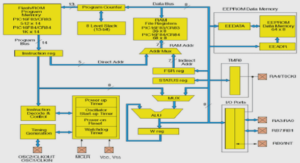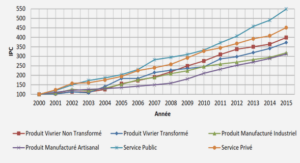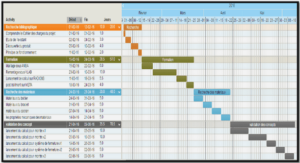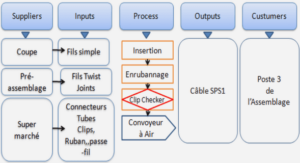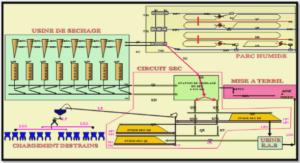Early studies and birth defects
INTRODUCTION
Crying is the first and clear sign of life which is seen clearly shortly after the baby’s live birth. Reasons of infant’s cry are the same reason of speech in adult i.e. to let others know about their needs or problems. In other words, every baby is born with the ability to express their needs through sound. Therefore this multimodal signal carries a lot of information about the baby. For example, Mrs. Priscilla Dunstan1 has decoded five universal infant cry patterns as an easiest way to settle an inconsolable baby who can make a parent feel quite helpless and powerless. These patterns are sort of a baby language based on phonetic sounds, which are created as part of the automatic reflexes that all newborn babies make.
Analysis of infant cry signals was pioneered in the late 1960s in Scandinavia. After some sound spectrographic cry analysis of infants with various diseases, in some cases it has been noticed that there are fixed cry attributes, which are rarely seen in cries of healthy infants.
Instead, these attributes occur very often in cries of infants with diseases. Therefore it was found that concealed information contained in infant cry signal can reflect a diverse range of diseases and conditions that could affect an infant’s health. In early studies of infant cry, the acoustic structure of infant crying was analyzed and some of the important variables controlling the production of their cries were described. Afterwards, focus of attention was shifted into the sounds produced by the hungry, lonely, pain, hurt, or generally discomforted infants. Although there have been some books and products created through the years to unlock the secret language of babies, their potential for use in the early diagnosis and treatments in newborns remains largely in an open and undeveloped state.
REVIEW OF THE STATE OF THE ART
In this chapter, we present the previous research studies that were related to ours. Many authors have contributed to the development of such this classification system for different types of diseases. A comparison between pattern recognition techniques helped us to better understand what kind of features and classifier could be the best choice for our purpose.
Consequently, this chapter tries to emphasize the key role of both feature selection and classification approach in such a system. Whenever there is a need to diffuse confusion, we will define the terminologies used in this research to diminish ambiguity that may arise in the discussion.
Fundamental concepts
This section has a primary concept of cry analysis and gives you a good view of cry signals and their features. This information is not essential to follow the remainder of this thesis but it may help you better understand where they came from and its importance.
Types of cries in infants
In relevant prior works, different kind of cry signals as a database is observed such as hunger cry, pain cry, and normal cry. Crying due to pass 3 to 3.5 hours after last feeding of infants has been referred as the hunger cry (Newman, 1985). Some studies have elicited pain cry based on use of a stimuli such as rubber band snap, heel stick with a blood lancet, skin pinch on the arm or ear, or removal of electrodes from infant’s body (Cacace et al., 1995). The pleasure cry is produced by an infant who has been fed and changed and who shows clear indications of being comfortable (Sagi, 1981).
Mortality rate and birth defects
Statistics reports by World Health Organization (Congenital anomalies, 2014) and Center for Disease Control and prevention (Rynn, 2008) present that the congenital anomalies or birth defects affect about 1 in 33 born infants every year. In an article published by the New Brunswick Beacon (Silverthorne, 2014), it was reported that according to press released from the CDC and the Public Health Agency of Canada, the risk of birth defects in Canadian babies is higher than American. Moreover, based on the Factbook published by Central Intelligence Agency (The World factbook, 2013-14), United States’ infant mortality rate is 6.17 per 1,000 live birth which is higher than at Canada of 4.71 rate. In Table 1.2 the leading causes of infant death in the U.S. in 2010 are listed (Heron, 2013).
Primary research
Some of prior works have focused on analyzing different kinds of cries and trying to find differences between them. A preliminary report of infant cry analysis in 1963, researchers could distinguish 4 types of infant cry, namely the first birth cry, the hunger cry, the pain cry, and the pleasure cry from each other both auditorily and by using of sound spectrography (Wasz-Hockert et al., 1963).
K-nearest neighbor
K-Nearest Neighbor (K-NN) is very simple to understand and easy to implement. So it should be considered in seeking a solution to any classification problem. The process is transparent, it is easy to implement and debug. There are some noise reduction techniques that work only for k-NN that can be effective in improving the accuracy of the classifier.
Most important disadvantages of KNN are as follows:
1. Because all the work is done at run-time, K-NN can have poor run-time performance if the training set is large;
2. K-NN is very sensitive to irrelevant or redundant features because all features contribute to the similarity and thus to the classification. This can be ameliorated by careful feature selection or feature weighting;
3. On very difficult classification tasks, K-NN may be outperformed by more exotic techniques such as SVMs or Neural Networks.
CONCLUSION
This thesis is conceived as a research work of MMS laboratory of Université du Québec, École de technologie supérieure under the direct supervision of Dr. Chakib Tadj.
The ambitious goal – the non-invasive newborn cry-based diagnostic system – is design of an additional tool or health care system that can be trained to work as an indispensable assistant to help the pediatricians who have misgivings arrive at a decision. The system would be able to classify healthy and sick infants who suffer from different enrolled diseases or pathological conditions. If you break down this goal into smaller steps, in this thesis we reached a significant milestone one the way to the newborn cry-based diagnostic system.
Most of the previous works on assessment of infant cry provide a binary classification of healthy infants from sick infants who suffer from a known (specific) disease such as deaf babies. Nonetheless, in this work the focus of attention in the domain is shifted into the openset multi-pathology recognition scenario. In other words, there is a class called “others” or “none-of-the-above” in the target set dedicated solely to the test sick infants who suffer from unseen out-of-set sicknesses that are not enrolled in the system yet. Therefore, an informed choice of pathological states and collecting of the infant cry data base were necessary and unavoidable which have been done in the neonatology departments of several hospitals in Canada and Lebanon. It is worth mentioning that due to the inspiration behind this research work, there was no constraint placed on the recording procedure of infant cry signals.
|
Table des matières
NTRODUCTION
CHAPITRE 1 REVIEW OF THE STATE OF THE ART
1.1 Fundamental concepts
1.1.1 Definitions and elucidation
1.1.2 Types of cries in infants
1.2 Background
1.2.1 Mortality rate and birth defects
1.2.2 Primary research
1.2.3 Early-infant medical researches
1.2.4 Review of studies on machine learning and classification problems
1.3 Cry pattern classification
1.3.1 Brief description on various classifiers
1.3.1.1 ANN and SVM
1.3.1.2 Decision tree
1.3.1.3 Naïve Bayes
1.3.1.4 K-nearest neighbor
1.3.2 Why Gaussian Mixture Models?
1.3.2.1 Introduction to GMMs
1.3.2.2 Learning of GMMs
1.3.2.3 Boosting algorithm
1.4 Brief objectives, methodologies and contributions
1.5 Summary
CHAPITRE 2 CRY-BASED CLASSIFICATION OF HEALTHY AND SICK
INFANTS USING ADAPTED BOOSTED MIXTURE LEARNING
METHOD FOR GAUSSIAN MIXTURE MODELS
2.1 Abstract
2.2 Introduction
2.3 GMMs for Cry-Pattern Classification
2.4 Newborn Cry-Based Diagnosis System (NCDS)
2.4.1 Cry Database
2.4.2 Pre-processing and feature extraction
2.4.3 Adapted BML method for GMMs
2.4.4 Initialization of sample weights
2.4.5 Process of adding a new component
2.4.6 Partial and global updating
2.4.7 Criterion for model selection
2.4.8 Decision rule
2.5 Experiments
2.6 Conclusion
2.7 Acknowledgment
CHAPITRE 3 SPLITTING OF GAUSSIAN MODELS VIA ADAPTED BML
METHOD PERTAINING TO CRY-BASED DIAGNOSTIC SYSTEM
3.1 Abstract
3.2 Introduction
3.3 Gaussian mixture model
3.4 Adapted boosted mixture model
3.4.1 Process of adding a new component
3.4.2 Partial and global updating
3.4.3 Initialization of sample weights
3.4.4 Criterion for model selection
3.5 Experiments
3.5.1 Preprocessing and feature extraction
3.5.2 Multi-pathology classification
3.6 Conclusion
3.7 Acknowledgment
CHAPITRE 4 CRY-BASED INFANT PATHOLOGY CLASSIFICATION USING
GMMS
4.1 Abstract
4.2 Introduction
4.2.1 Early studies and birth defects
4.2.2 Related studies
4.3 Recording procedure and cry data base
4.4 Feature extraction
4.4.1 Preprocessing stages
4.4.2 Static and dynamic MFCCs
4.5 Statistical modeling and descriptions
4.5.1 Likelihood ratio detector
4.5.2 Gaussian mixture models
4.5.3 System description
4.5.4 Applying the GMM-UBM
4.5.5 BML adaptation of sub-models or health-dependent-infant cry model
4.6 Evaluations and experiments
4.6.1 Defining GMM-UBM and adaptation methods
4.6.2 Log-likelihood score computation
4.6.3 Health-condition detection system
4.6.3.1 Healthy infant detector
4.6.3.2 Sick infant detector with a specific disease
4.6.4 Fusion, calibration and decision
4.6.5 Results and discussion
4.7 Conclusion and further discussion
4.8 Acknowledgment
CONCLUSION
![]() Télécharger le rapport complet
Télécharger le rapport complet

